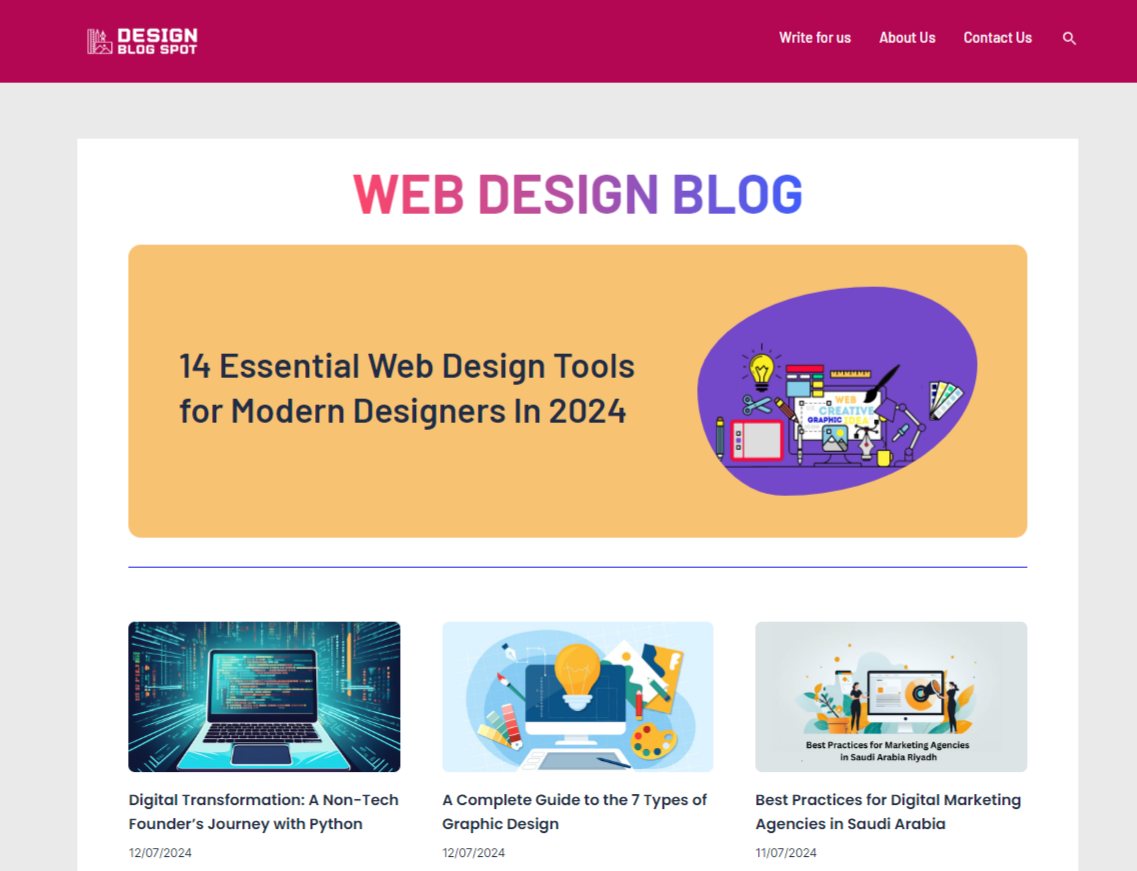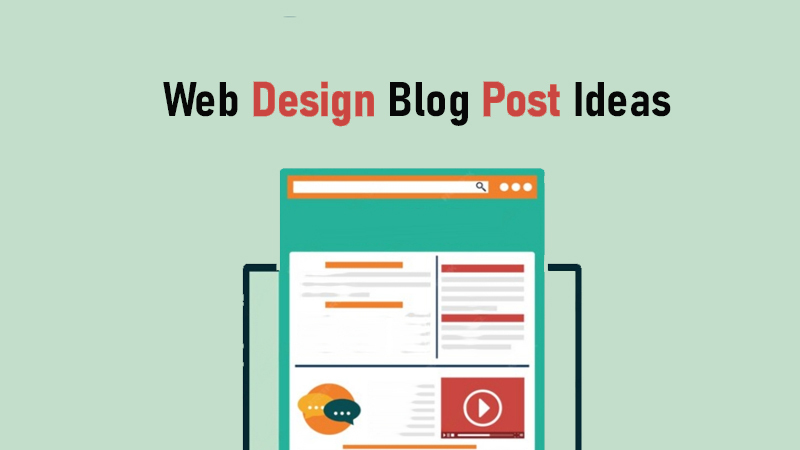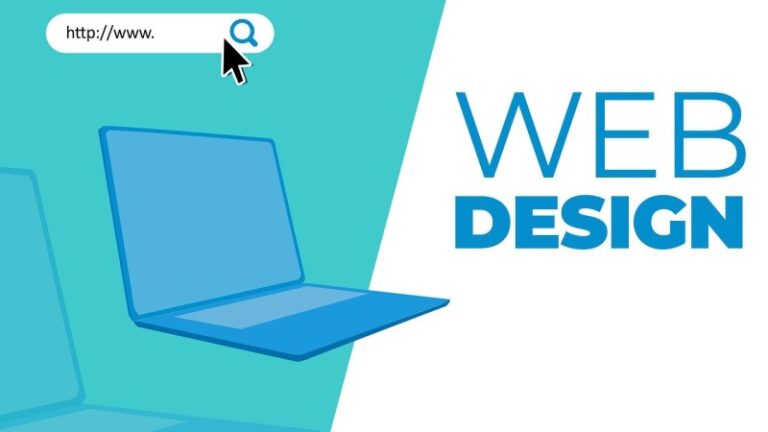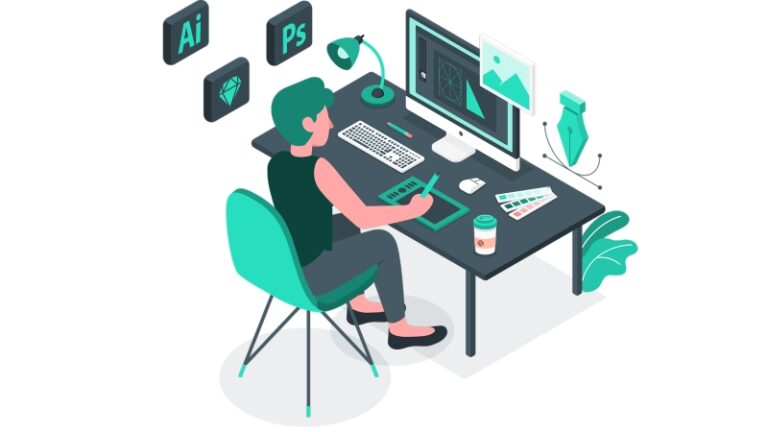Are you a web designer who wants to create a new blog or freshen up current design project? It is not easy to come up with new material ideas regardless of whether you have years of experience in the industry or are just beginning your career. And that is why, here you have an awesome list of 105 web design blog post ideas to inspire you and your audience in equal measure for trending designing topics.
In today’s increasingly dynamic digital world, the web design blogs are primarily important sources for those interested in this field. These provide an avenue to contribute knowledge and present current trends and technologies being having to the industry. It only takes a few seconds to find a valuable topic, ranging from simple tutorials and easily implemented cases to discussions of philosophical topics in design.
What should web designers blog about?

Blogging as a web designer means having a blog where you post useful information, tutorials, ideas, and your experience in the sphere of web design. It can involve relaying information on new designs, product reviews, providing guides on how to use certain tools and applications, presenting your work, and explaining the design process. First and foremost, blogging can help web designers promote themselves as professionals in the sphere, attract potential clients, and build a communication network with fellows and fans.
Value of Web Design Blogs Topics: How They are Beneficial to You?
Continuing Education
Web design as a discipline is constantly changing at the present moment. Browsing design blogs enables you to get an idea on new trends, new technologies, and ways of designing a certain product.
Expand Your Skill Set
The drawings and writings of design blogs are usually tutorials, tips, and techniques that enable you to enhance your skills and acquire new tools.
Gain Inspiration
While browsing showcases and cases from design blogs one can get inspired and come up with new ideas for one’s projects.
Interact with the Designs
The majority of blogs have the comments section or the forums where you can communicate with other designers – or where you can always throw a question and discuss with other people.
Access Expert Insights
Fashion bloggers or top designers share their opinions or even write blogs themselves so get a chance to extend your knowledge.
Discover Useful Resources
It is also common to find articles in design blogs that discuss useful tools, software, plugin, and resources that you may use to make your designing more efficient.
Learn from Real-World Examples
Specific experiences and dissections of projects in blogs give information to the web designer on how effective designs are made and/or put into practice.
Avoid Being Swallowed by News You Need To Know
This kind of information pertains to changes on design tools, on the browsers, and on web standards within the industry, and is commonly found in blogs.
Enhance Problem-Solving Skills
To find ideas of how other designers handle problems, and to learn from them so that in the future, you can adapt them to your own projects.
Continual Professional Development
Subscribing to design blogs is beneficial to one’s continued learning and development in the area of web design.
Methods for Finding Web Design Blog Topics
Here are tips on how to generate good topics for a web design blog:
Monitor industry trends:
The first recommended step is to watch industry trends. To make it easy, follow some web design bloggers and news sites so that you can be up to date with the latest trends. Monitor the tags on social media and attend webinars and virtual sessions to be aware of new trends and topics.
Engage with your audience:
Endeavor to seek out the interests of your audience. Readers’ comments will help in determining what your readers find most interesting in terms of content that you post on the blog. Ask readers to fill out surveys or take polls to know their preferred topics directly; or allow them to contribute questions or topic ideas.
Explore competitor content:
Another method that can be useful is the exploration of competitor content. Configure frequently read posts from other web design blogs and determine what topics are missing from their list of topics. Therefore, it is also possible to make themes and topics popular for other blogs and give people a different look on things.
Utilize keyword research tools:
Use keyword research opportunities to find out what people are searching for and other relevant keywords. Google Keyword Planner or SEMrush : To actually come up with high-traffic phrases and to assess search volumes and competition in order to create corresponding content.
Draw inspiration from your own experiences:
Explain using real life examples from your work, present your projects and talk about the difficulties that required a solution and an explanation of how you came up with your concept. This personal touch can help to make the content you deliver to your audience more relevant and informative.
Leverage online communities:
Utilize online groups to solicit ideas and interact with designers that work on similar projects. Join groups and subreddits related to web design or on LinkedIn, Facebook or any other social platform potential customers are likely to be present.
Stay updated with technology:
Include news and progress in the field of web design by describing new tools and software, analyzing new trends such as AI, and considering the reactions of designers to the browser upgrades and updates. This helps make sure that the content that you are creating is still relevant in a field where things are changing so rapidly.
Repurpose existing content:
Revise content that is old to make it as current as possible. Comment on older posts with fresh content, write more about related topics in separate articles, and build post series from single most popular posts to provide better value to your readers.
Use content ideation tools:
Utilize content ideation tools to generate new ideas. Tools such as AnswerThePublic or Buzzsumo or any AI-based content idea generator can be useful in this case. Furthermore, it is useful to expand the knowledge of Google’s “People Also Ask” section to find out what other topics should be addressed.
Collaborate with others:
Last but not least, seek help from other sources to enhance our material. Talk to other professionals in the interview industry or invite renowned designers for an interview, collaborating with other bloggers to share guest posts, and asking your team or colleagues to share their opinions to include the various insights that you may not be able to see.
Using these approaches, it is possible to come up with new ideas to post on your web design blog and remain relevant to your target audiences.
105 Web Design Blog Topic Ideas to Boost Your Creativity
1. Top Web Design Trends
2. Best Practices for Mobile-First Websites with Responsive Design
3. Micro Animations’ Significance in Improving User Experience
4. How to Make the Most of White Space in Web Design
5. Crucial Font Advice for Contemporary Web Designers
6. AI’s Effect on Web Design: Opportunities and Difficulties
7. Designing with Accessibility in Mind: Important Factors and Methods
8. The Significance of User-Centric Design
9. Building Captivating Landing Pages: A Complete Guide
10. Ways to Increase Website Load Speed Without sacrificing Design
11. Using Dark Mode: Advantages and Optimal Procedures
12. Creative Methods for Web Design Parallax Scrolling
13. Future Trends in eCommerce Design to Keep an Eye on
14. 5 Essential Instruments to Optimize Your Design Process
15. How to Design Websites with an Aesthetic-Functional Balance
16. Creating Strong Calls to Action: Advice and Samples
17. Top Free and Paid Resources for High-Quality Web Graphics
18. Exploring Minimalistic Web Design: Less Is More
19. How to Conduct Effective User Testing for Website Design
20. Creating a Consistent Brand Identity Across Web and Mobile
21. How to Quickly Include Video Content into Web Designs
22. Colour Psychology’s Place in Website Design
23. Building Interactive Websites: Tricks and Techniques
24. Designing with Data: How Analytics Can Improve Web Design
25. Effective Use of Grid Systems in Modern Web Design
26. 10 Typical Web Design Errors and How to Fix Them
27. How to Create Multilingual Website Designs
28. Using Scalable and Quick-loading Images with SVGs
29. The Right CMS to Choose for Your Website Design Project
30. Wearables Design: A New Era in User Experience
31. Top Tips for Creating Single-Page Applications (SPAs)
32. How to Use Design to Build an Easy Onboarding Process
33. Trends in Web Design Portfolios: 2024’s Trending Items
34. The Value of Content Organisation in Web Design
35. Innovative Navigation Trends in Website Design
36. How to Design for Different Cultural Preferences
37. Best Practices for Designing Web Forms
38. Examining Virtual Reality’s Potential for Web Design
39. How to Use Animations on a Website Without Degrading Performance
40. Where Are We in the Evolution of Flat Design?
41. Developing an Easy-to-use CMS Interface for Customers
42. How to Make Your Web Design Better Using Heatmaps
43. Creating Successful Error Pages: Guidelines and Samples
44. How to Stay Current with Your Web Design Knowledge
45. Examining the Brutalism Idea in Web Design
46. How to Use CSS Grid to Create a Dynamic Grid Layout
47. Storytelling’s Place in Web Design
48. Voice Search Friendly Design: Tricks & Strategies
49. How to Increase Efficiency with Progressive Web Applications
50. Web Design Ethics: Essential Knowledge for All Designers
51. How to Create for Various Devices: A Complete Guide
52. The Advantages of Design System Utilisation
53. Mastering Visual Hierarchy in Web Design
54. Feedback Loops’ Function in User Experience Design
55. Developing a Website Style Guide
56. How to Make the Most of Design Patterns
57. Analyzing the Impact of Web Design on SEO
58. The Basis for Augmented Reality (AR) Design
59. How to Incorporate Social Proof into Your Website’s Design
60. Prototyping’s Place in Contemporary Web Design
61. A Manual for Creating Multi-Browser Designs
62. How to Create Engaging Web Content Through Design
63. The Future of Web Design: From AI to Quantum Computing
64. Top Design Tools for Web Designers
65. Ways to Create a Website That Will Increase Conversions
66. Examining the Intersection of Web and Graphic Design
67. The Significance of Uniformity in User Experience
68. Internet of Things (IoT) Design Guide
69. The Best Ways to Create Secure Websites
70. The Role of Personalization in Web Design
71. Designing Websites for Non-Profit Organizations
72. How to Use CSS Flexbox for Responsive Layouts
73. Exploring Motion Design Trends in Web
74. How to Create an Effective Sitemap
75. Designing for Scalable Design Systems
76. The Importance of Anticipatory Design in UX
77. Best Practices for Designing Blog Pages
78. How to Use Gamification in Web Design
79. The Role of Neuroscience in Web Design
80. Creating an Effective Color Palette
81. Examining Iconography’s Application in Web Design
82. How an Effective Design Sprint Is Operated
83. The Ideal Methods for Creating B2B Websites
84. How to Apply Metaphors Visually in Web Design
85. Tips on How to Write an Exceptional About Us Page
86. Examining Product Landing Page Trends
87. How to Make a Website Visible to Everyone in the World
88. Best Practices for Grid Layouts in Web Design
89. How to Establish and Implement a Design System
90. Exploring Animation Techniques in CSS
91. Creative Approaches for Rapid Digital Adoption
92. How to Design a Pricing Page That Looks Good
93. User Experience: The Significance of Emotional Design
94. Creating User Interfaces for Business Use
95. How the Design Process Can Use User Input
96. Investigating the Effect of Web Design on Brand Image
97. Techniques for Creating Smooth User Flows
98. The Significance of Accessibility in Adherence to Law
99. Creating Interactive Storytelling That Is Effective
100. How to Stay Current with Web Design Industry Standards
101. Examining the Advantages of Skeuomorphic vs. Flat Design
102. How to Create a Functional Design System
103. Blockchain Design: Opportunities and Difficulties
104. How to Produce Viscerally Captivating Content
105. Examining the Confluence of Marketing and Web Design
These are the enough topics to boost up your web design inspiration thoughts.
How do create a blog web design?
Knowing your goals and the target audience will be crucial when designing your blog webs especially if you have to make choices. Choose a blog platform like WordPress or Squarespace, and then choose the best blog theme for your blog. Ensure a clean and clearly defined heading area, easily navigable toolbar and proper usage of images and graphics. Ensure that the layout used is one that is friendly to a mobile device and the fonts used are legible and the layout clean. As a result, incorporate social media sharing buttons, follow SEO rules carefully and perform design testing thoroughly. It is also important to monitor the performance and obtain feedback continuously to make improvements.






